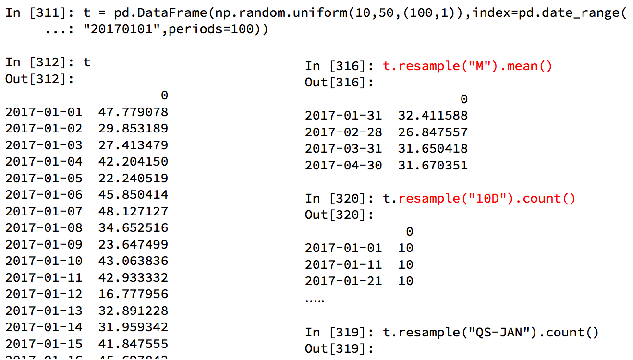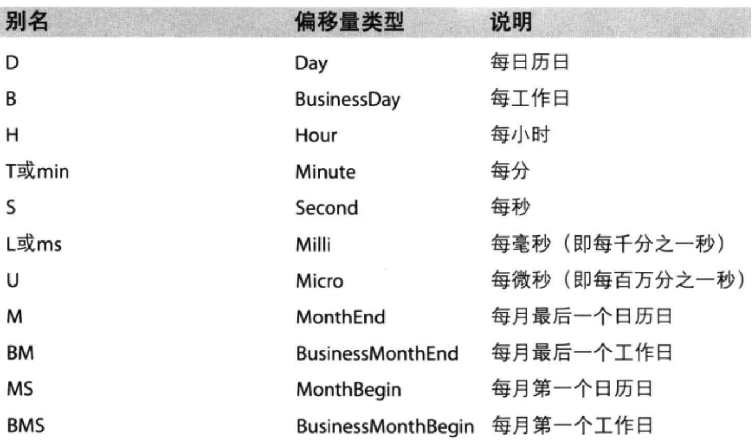1、data_range生成时间范围
a) pd.date_range(start=None, end=None, periods=None, freq='D') start和end以及freq配合能够生成start和end范围内以频率freq的一组时间索引 start和periods以及freq配合能够生成从start开始的频率为freq的periods个时间索引
freq可选择:
b)将时间字符串转为时间序列
使用pandas提供的方法把时间字符串转化为时间序列
df["timeStamp"] = pd.to_datetime(df["timeStamp"],format=""),其中format参数大部分情况下可以不用写
c)DataFrame中使用时间序列
index=pd.date_range("20170101",periods=10) #生成时间序列
df = pd.DataFrame(np.random.rand(10),index=index) #将时间序列指定为index
2、重采样
重采样:指的是将时间序列从一个频率转化为另一个频率进行处理的过程,将高频率数据转化为低频率数据为降采样,低频率转化为高频率为升采样
pandas提供了一个resample的方法来帮助我们实现频率转化
使用案例:

3、重组时间序列:主要将数据中的分离的时间字段,重组为时间序列,并指定为index
#把分开的时间字符串通过periodIndex的方法转化为pandas的时间类型 period = pd.PeriodIndex(year=df["year"],month=df["month"],day=df["day"],hour=df["hour"],freq="H") print(period) df["datetime"] = period #把datetime 设置为索引 df.set_index("datetime",inplace=True)
